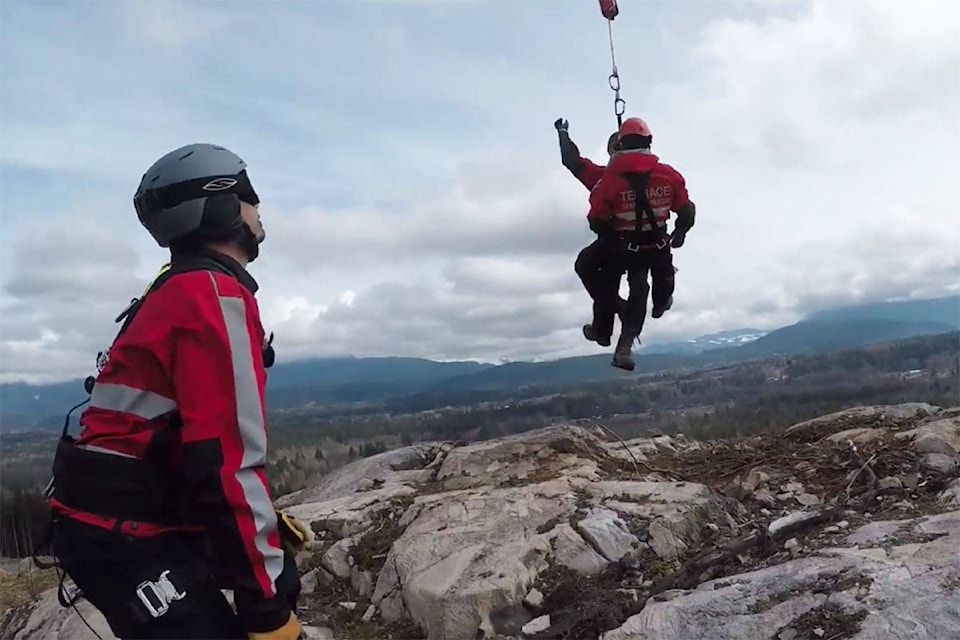Terrace Search and Rescue (SAR) has been officially recognized by Emergency Medical BC (EMBC) as a facility capable of air-lifting a person to safety using helicopters and suspension gear.
Dwayne Sheppard, Terrace SAR president, said the process allows for a faster response time in situations where the terrain is inaccessible to rescuers on foot, and when rapid intervention is key.
“It offers many advantages over traditional land-based rescue,” Sheppard said.
The announcement on Feb. 24 was made possible through funding in partnership with Great Slave Helicopters (GSH), a helicopter company in Yellowknife, N.T. and Aerial Solutions Inc., an aircraft rental service in Vernon B.C. Great Slave Helicopters already invested in the Human External Cargo (HEC) system last year, but SAR teams in the city were waiting for application approval from EMBC before starting training and buying equipment.
Eight members of the search and rescue team have been trained since the approval, with another session scheduled for the spring for additional members.
There were cases last year when SAR rescuers would have preferred to use the CDFL rescue technique but were not qualified to do so, said Sheppard.
On Sept. 11, 2017 more than a dozen people were rescued after the Kitimat River broke its banks and flooded the Big Spruce area early in the morning. Twelve people were rescued by boat, and two by helicopter.
“They were standing on top of their mobile homes looking for help,” Sheppard said. “The long-line system would have definitely been useful in that situation.”
READ MORE: 13 people rescued after Kitimat River floods
Dave Jephson, search and rescue vice-president for Terrace, said Aerial Solutions Inc. and Great Slave Helicopters greatly reduced the cost of training for this procedure in exchange for more manpower. Normally, to train a team of eight in helicopter long-line rescue could cost around $100,000, according to Jephson.
Now Jephson said they could have a team of trained SAR members in any of the three helicopters supplied by GSH with a long-line rescue system ready in “the next five minutes” to fly anywhere in northwest B.C if needed.
“It’s just another tool in our toolbox,” Jephson said.
Long-line access is used as part of the toolkit for 10 SAR groups in B.C., commercial oil and gas exploration, BC Hydro and several other operations.
brittany.gervais@terracestandard.com
Like us on Facebook and follow us on Twitter
